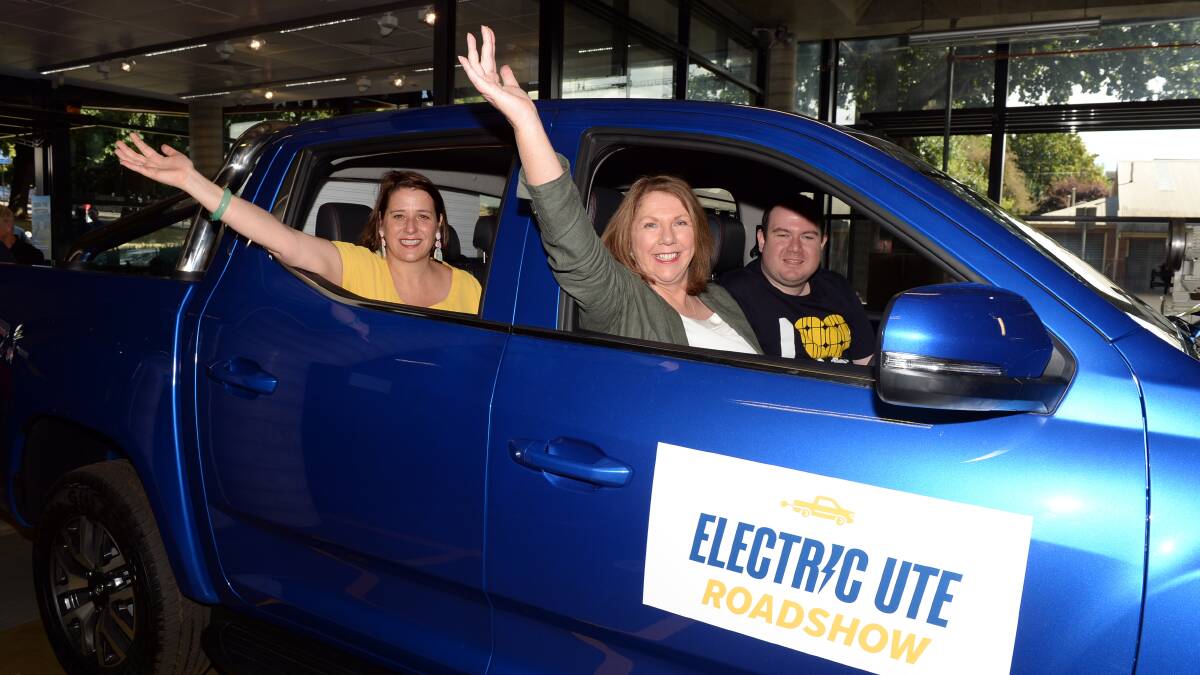
Ballarat's Federation TAFE played host to what is being touted as "Australia's first fully-electric ute" on Saturday, to mark the release of a new report on the economic benefits of a national fuel efficiency standard.
Subscribe now for unlimited access.
$0/
(min cost $0)
or signup to continue reading
Sustainability non-profit Solar Citizens held the event, which saw the EV ute on display in the TAFE's S Building, and speeches from the report's main researcher and federal Ballarat member Catherine King.
The report Recharging Ballarat report was commissioned by Solar Citizens, to look at the potential savings for the region should a fuel efficiency standard be introduced in the Australian car market before 2024.
A fuel efficiency standard sets an average carbon emissions target for new vehicles sold by each car maker every year.
Despite being common in places such as Europe, Australia does not have a mandatory standard for new cars.
Solar Citizens researcher Tom Quinn said the implementation of a fuel efficiency standard would save Ballarat $80 million across five years, as electric vehicles and more efficient fossil fuel vehicles cut overall spending on petrol and diesel.
"We know how many cars we have, we know how many people live here, and we know how many cars we buy each year," he said.

"It is shifting that to go, if we increase the amount of EVs and increase the car's fuel efficiency, how much can we save?
"When we pay it at the bowser goes straight to fossil fuel companies that are based overseas.
"That $70 million can be spent in out community, supporting our local businesses instead. The economic opportunity that presents for a region like Ballarat is just huge."
Pulling together census data, the report found Ballarat lagged behind the Australian average of electric vehicle ownership, with 0.04 per cent of Ballarat's local fleet electric compared to 0.07 per cent nationally.
The report also found Ballarat residents commuted longer distances on average than metro Melbourne residents - with a 97.7km weekly average commuting distance in Ballarat compared to 75.1km in Melbourne.
Ballarat also had a larger percentage of car ownership per 100 people than greater Melbourne and the Australian average - at 61.4 passenger cars per 100 people.
Solar Citizens regional clean transport organiser Ben Lever said the findings showed that regional Victoria had more to gain from a transition to electric vehicles in terms of potential savings.

"We noticed that there was a little bit of a gap in EV campaigning - it was a little bit city focused," he said.
"We didn't want the regions to be just an after thought in that process."
"What it has shown us is that the regions stand to gain a lot more from the cities, because in regional Victoria we drive a lot more and pay more at the petrol pump."
Mr Lever said there were still some hurdles for electric vehicles to get over before becoming a preferred choice for Ballarat motorists, including the price point of new electric vehicles.
"It was only a few months ago that we were hearing politicians say 'electric utes don't exist'. We have one here today, and there are more models that the manufacturers are bringing out soon," he said.
"We want to bring those models that are on the way to Australia as quickly as possible. With each generation of it, the technology will improve, the next generation will be really high performing."
From Ballarat, Solar Citizens plan to take the EV ute across the east coast of Australia, finishing in Gladstone, Queensland.
To read the full Recharging Ballarat report visit Solar Citizens website.


